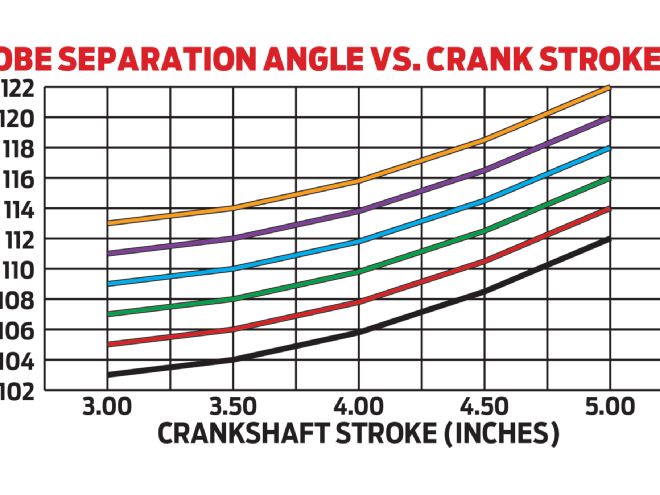
Generating peak power and torque at about the same rpm point after increasing crank stroke requires moving the cam’s intake-closing point later and the exhaust-opening point earlier. This calls for both slightly more duration plus a wider lobe-separation angle (LSA). Looking at LSA generated using data supplied by Comp Cam’s Billy Godbold, shows, for example, that maintaining the same rpm peak points as a 3.50-inch stroke engine running a cam with a 110-degree LSA requires about a 114.5-degree LSA if the stroke was increased to 4.50 inches. The reasons for this are complex but include compensating for the long-stroke’s lever-arm affects on engine torque as well as the increased cylinder head port velocity generated by a stroke increase.